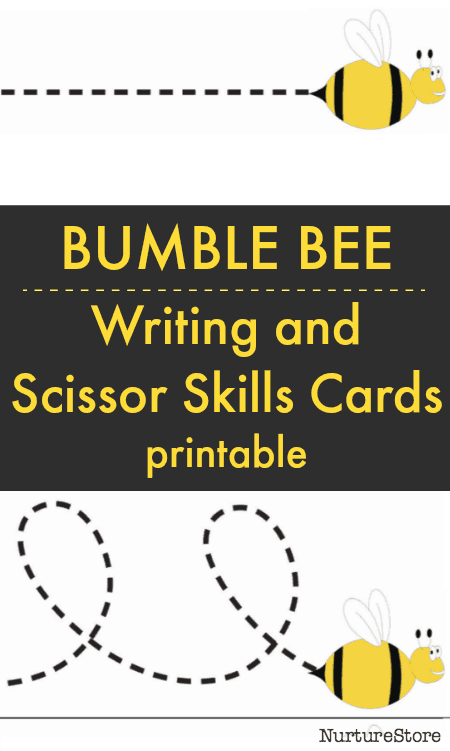Use these printable bee-themed follow-the-line cards to help your child develop hand-eye co-ordination, practise mark making and writing, and to work on scissor skills.

by Cathy James
Use these printable bee-themed follow-the-line cards to help your child develop hand-eye co-ordination, practise mark making and writing, and to work on scissor skills.

by Cathy James
Have you ever tried building stone cairns? If you have children who love building towers they’re a fab activity to try – combining natural materials, loose parts, construction play and just a little added dash of wow-factor!
by Cathy James
Transform an ordinary jigsaw into a special puzzle just for your baby with this idea for a hide and seek personalised jigsaw puzzle featuring some of your baby’s favourite people.
by Cathy James
When I think back to the ways I learnt how to spell as a child, there was no fun or creative play involved. We got list of ten words every week, we copied them, we copied them, we copied them again, and then we had a test on a Friday to see how well we could remember them. We also had to put our hands up to show the whole class our scores, so if you hadn’t remembered that many it was pretty miserable.
But learning how to spell doesn’t have to be like that. Here are ten ways we learn spellings in our house – with lots of creativity and fun and jumping around involved.
There are lots of different ways that children learn and these spelling activities cover a range of preferred learning styles: visual/spacial, auditory, kinesthetic… If your child has a very strong learning preference trying out these ideas might help you discover a way that’s just right for them (it’s helped enormously in our house). In any case, all children can benefit from learning through a variety of ways, using all their senses, mixing things up a little so it doesn’t get boring, and maybe even enjoying learning how to spell.
The activities may take a few minutes longer to set up then just grabbing a pencil and paper but we’ve found they are a whole lot more fun – and effective – than just copying out the words.
by Cathy James
Maps are a wonderful invitation to discover a new place, full of adventures and possibilities! Here are five ways you can use maps for storytelling, language skills, and reading activities.
by Cathy James
These sensory bags made using gel are wonderful for using our senses of touch and sight, and combine especially well with the sunshine. Here’s how to make sensory bags and ideas for using them for sensory play activities.

